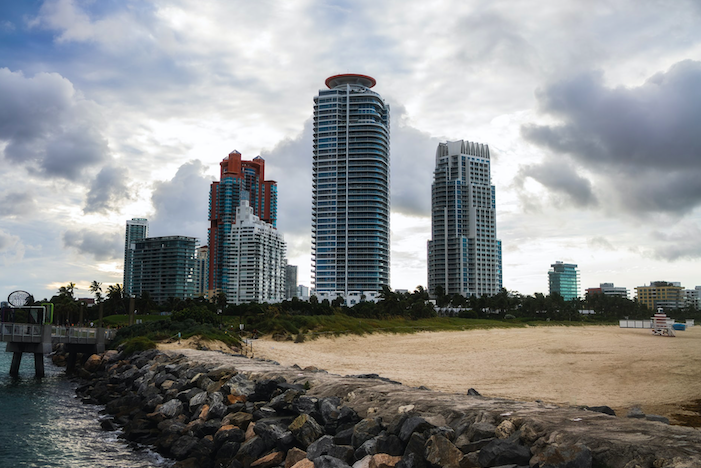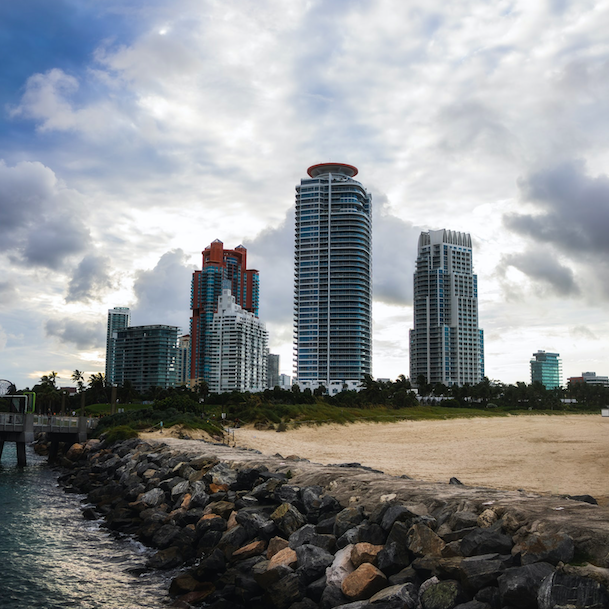Mental Health and the Holidays: Take Care of Loved Ones, Yourself


Living through 2020 has been a little like wandering into a boxing ring with the heavyweight champ of misery. The hits just keep coming: COVID-19, racial injustice, shutdowns and isolation, job losses, polarizing political campaigns, wildfires, hurricanes and even “murder hornets.” It’s enough to affect our mental health and make even the most resilient person feel concussed.
Small wonder that so many people in the U.S. are experiencing anxiety and depression. Alcohol and substance abuse are on the rise as coping mechanisms. Rarely, if ever, has there been so much cause for concern about mental health.
The New Year looms ahead, and with it more anxiety. Will there be more lockdowns and isolation? Will things get better before 2022? With so much uncertainty, there is an even-sharper edge to the usual mixed feelings that many have as holidays approach.
With that in mind, here are some thoughts and tips on maintaining our own mental health and caring for others as the year hurdles toward its end:
It sneaks up on you: I know this from personal experience. I’m one of those people who tends to act on his gut, and for much of my life that was a good thing. Work hard. Don’t be late. Exercise now, not later. Be social. Learn to play ice hockey. Life was a series of instincts and responses, and when I followed my instincts, things worked out great.
But over time, those instincts turned on me. I trusted my gut even when it started telling me not to exercise, not to socialize, not to worry about eating well or getting enough sleep. From my perspective, I was doing what I always did: I had a thought, it seemed like a good idea, and I would act on it. Gradually, I stopped doing anything that was good for me, in what seemed like a perfectly natural way, and despair and a feeling of futility followed. That’s depression. I learned the hard way not to believe everything I think. Fears and feelings may be powerful, but they are not facts.
Others can’t help if they don’t know: Many people, even after realizing they have a mental health problem, hide it, as I did. Asking for help is scary. People don’t like to admit weakness. They worry that family and friends will think less of them. They worry that their bosses and colleagues will judge them harshly. They worry about the stigmas of medication and seeking professional help. I kept up the charade until I hit the wall. In retrospect I see how pointless that was.
I believe the best thing to do if this happens to you is to focus on the people who can help, not on fear. As I explained in a recent video about mental health in the workplace for Disability:IN, when given the choice, most colleagues—and family members even more so—will choose to be helpful and supportive. But when I isolated myself, I denied them the opportunity to prove my fears wrong by demonstrating their inclusiveness and caring natures. Things got so much better when I opened up to those close to me, including my manager. I would urge everyone to be honest with others—and with themselves.
Keep an eye on your loved ones: Understanding what happened to me, and finally getting the help I needed, has given me the heart to look out for others as well as the sharp eye needed to spot symptoms. Someone suffering from depression or another mental illness might be the last to recognize it. In my case, I was probably the last to know.
If a loved one is showing signs of depression—listlessness, isolation, secrecy, over-indulgence—say something. The discussion might be uncomfortable but ignoring warning signs is worse.
This has been a rough year, to put it mildly. As a result, the holidays hold a greater-than-usual potential for anxiety and depression. Try to be watchful and protective of loved ones. And don’t neglect yourself: Keep an eye on how you’re really feeling and have the courage to be open about it.
Originally posted on LinkedIn.
Image credit: Bart LaRue/Unsplash
Why a Migration Plan is a Must for the Biden Administration


As we discussed yesterday, the Biden administration must honor our nation’s collective responsibility to minimize the impacts of the climate crisis on Americans and people everywhere now and into the future. How? The first two priorities, as previously discussed, include rejoining the Paris Agreement and boost jobs in the emerging resilience center. Third, the federal government should launch the long-term migration plans necessary to secure the safety of citizens most vulnerable to climate risks.
As the New York Times said this summer, the “idea of retreating from areas that can’t be defended…is a political minefield.” Nevertheless, with his five-decade career behind him, President Biden can afford to show courage and wade in. Taking on such a complicated plan has many moving parts – but bottom line, it’s time to focus on how we can protect populations throughout regions that are most vulnerable to climate change across the U.S.
Here’s why the Biden White House must focus on both migration and resilience.
Numbers and statistics don’t lie: migration is already underway
Let’s start with the numbers. To start, there were 454,000 disaster-induced displacements within the U.S. in 2019 alone, according to the extreme weather disasters measured by the International Displacement Monitoring Center. In addition, more than 386,000 homes, worth a total of about $210 billion, are at risk of coastal flooding by 2050 – and nearly two billion homes may become submerged by 2100, estimates the online real estate database company Zillow. At least 13 million U.S. coastal residents are expected to be displaced by 2100 due to sea level rise, says Bloomberg.
Those statistics foreshadow massive risks for the U.S. government – a daunting challenge that to date federal agencies apparently cannot grasp. For example, while FEMA classifies 8.7 million properties as having substantial flood risk, the First Street Foundation Flood Model identifies far more: 14.6 million properties with the same level of risk. This means nearly six million households and property owners have underestimated or been unaware of their current risk.
Meanwhile, the real estate industry has already started to integrate flooding risks into more property listings as cities like Miami Beach (pictured above) keep building along the shore even as it’s clear communities of color will bear the harshest burden as the climate crisis continues.
The financial sector is already adapting
The U.S. financial sector is responding in kind. The number and total value of flood insurance policies have been declining since 2006, meaning that households that purchased a property in coastal areas may be at increased risk of defaulting on their mortgages. Further, U.S. property insurance rates increased for 10 consecutive quarters since the fourth quarter of 2017 following Hurricanes Harvey, Irma and Maria. This 10-quarter streak tracks with greater storm frequency and intensity and follows 17 quarters of rate reductions, from the third quarter of 2014 to the third quarter of 2017.
Research has shown that after disaster-declared hurricanes, various banks have increased by almost 10 percent the share of coastal mortgages that they offloaded to Fannie Mae and Freddie Mac. Additionally, the odds of an eventual foreclosure rose by 3.6 percent for a mortgage originated in the first year after a hurricane, and by almost 5 percent for a mortgage originated in the third year.
Four ways the Biden Administration can secure the housing market during the climate crisis
These data suggest the U.S. housing market is trending toward the next “big short.” How can that trend be halted?
First and foremost, the Biden administration should immediately establish a climate change mitigation program, as recommended by the Government Accountability Office.
Next, the feds must emphasize resource-building in receiving communities as part of a strategy to make relocation from climate change hazards, from river and coastal flooding to wildfires. This is the easiest, most dignified and most attractive option for property owners and renters to pursue. This relocation emphasis should be a priority in fund allocations to FEMA and the Department of Housing and Urban Development (HUD). Both of these agencies have appropriations which explicitly allow for the acquisition and relocation of exposed communities, while the Small Business Administration (SBA) has the tools for risk mitigation and disaster recovery.
The incoming Biden administration also needs to ensure that the Community Reinvestment Act (CRA) requires investments to assess and address climate change risks, build climate change resilience, and do no harm to avoid perpetuating environmental injustice.
Finally, the U.S. needs a Climate Community Reinvestment Act as the next generation of the CRA. Such legislation would have to focus on community resilience investments including low- and moderate-income housing outside of flooding, combined sewer overflow, and wildfire-risk zones, cooling centers, natural infrastructure for heat and stormwater mitigation, which could become possible through the use of community development financial institutions (CDFIs) and other public-private partnerships.
For other ideas and inspiration for this crucial pillar of a Biden climate action plan, check out The United States’ Climate Change Relocation Plan via the Atlantic Council.
For the new Biden administration, accomplishing this work will ensure he makes progress on his stated aims to reduce inequality, lower levels of poverty, create a healthier environment, build stronger communities, and generate more and higher-quality jobs. Climate change is the humanitarian challenge of our time.
Lead with this in mind: the Natural Hazard Mitigation Saves report insists that the U.S. could cost-effectively spend $520 billion to reduce its disaster liability by $2.2 trillion. That’s good math for a resilience decade legacy.
Image credit: Carlos Veras/Unsplash
As Venture Capital Overlooks Women Entrepreneurs, They Find New Sources of Finance


Many venture capitalists are making pledges to back under-represented founders (women founders and BIPOC entrepreneurs) but as we discussed yesterday, there’s evidence from minority and women founders that this isn’t translating into actual capital. Female CEOs at last count have received a dismal 2.7 percent of venture capital (VC) funding. And women of color CEOs get less than 1 percent, according to the incubator and research center DigitalUndivided’s Project Diane.
Addressing the lack of diversity in the venture capital space
To back women-led companies, early-stage financiers may need to consider the realities facing women entrepreneurs, especially in a post-COVID world, said Tara Sabre Collier, Social Entrepreneur in Residence at Oxford University, where she lectures on impact investment as well as diversity equity and inclusion. According to her, these realities include greater income losses and childcare burdens, in addition to disparities in access to capital.
“We need to look at actually building these considerations into the process and look at the role of having diversity internally and how that translates into having a diverse portfolio. A really big hurdle is that too many of these funds don't have diversity internally. We haven't actually changed the internal demographics of the VC funds in a way that would materially change their pipeline,” Collier explained. “It's not just awareness; it's actually being a diverse organization themselves.”
Sabre Collier understands these distinctions first-hand, as she told 3p: “As a woman of both African and indigenous heritage, these issues are close to me because they affect people that are in my family and people that look like me so it's much harder for me to ignore than for people that are further removed from these problems.”
Innovative solutions to bridge the venture capital and finance gaps
An early-stage investor that has taken a different approach is Lightspeed Ventures, which invests in technology-driven companies. Believing that women are the earliest adopters of consumer technology, female-fronted organizations represent over one third of its consumer portfolio and in the past five years, it has invested over $125 million in companies founded by female entrepreneurs.
“They form partnerships with a lot of emerging angels, often from underrepresented backgrounds, to find that pipeline,” Sabre Collier explained. “I think that's a really interesting model for making a VC more inclusive and starting to back more into underrepresented founders.
Then there’s the emergence of scout funds, where female entrepreneurs act as scouts and independently seek deal flow. Cleo Capital, led by prominent investor and entrepreneur Sarah Kunst, raised $3.5 million in 2019 for a debut scout fund.
As Kunst said in this Axios article, “There's a lot of response about diversity — gender and race — and there's a lot of conferences and panels and dinners celebrating or highlighting women in tech, but there hasn't been a change in where the capital goes.”
A shift is underway, but women entrepreneurs still face hurdles
Another innovative approach is rolling funds, or “always-open venture funds,” which enable fund managers to start investing as soon as capital from LPs (limited partners or investors in the funds) comes in. The W Fund, led by Kate Brodock and Allyson Kapin, is using rolling funds. In August 2020, they set a target of $48 million — representing the percent of funding (48 percent) that would need to shift from male-led founders to female-led founders to achieve gender parity in venture capital funding. And they are particularly targeting Black women founders who only receive about 0.0006 percent of venture capital investments, compared to 2.7 percent of women overall.
Another bright spot on the horizon is gender lens investing, which has grown from funds managing $2.2 billion in 2018 to 138 funds managing nearly $5 billion by 2020. In the aftermath of the death of George Floyd in police custody and a global Black Lives Matter movement gaining momentum, some of these funds have pledged that they would back greater shares of Black founders and Black and minority ethnic groups. As 3p has reported, racial justice and racial equity index funds have emerged as a tool to bring investor attention to this gap.
“The data is starting to come out about the early-stage financing gap. And I'm hearing lots of investors talk about how to solve it. I think change is coming,” Sabre Collier says. “There are many ventures that can power the world. But in order for the founders of those ventures to succeed, to drive us all forward as a global society, access to capital needs to be better distributed in a more equitable way.”
Image credit: Andrea Piacquadio/Pexels
GM Doubles Down on Electric Vehicles, Again!


General Motors’ electrification strategy, centered on the company’s promise of an “all-electric future,” saw further augmentation last week as GM’s CEO Mary Barra promised an increase in financial investments in electric vehicles (EVs) along with promises of additional hiring in order to execute its plans.
Another boost in GM funding for electric vehicles
Speaking at the virtual Barclays Global Automotive Conference, GM announced the company promises to spend $27 billion through 2025 on both electric cars and autonomous vehicles (AVs), up from the $20 billion it had promised prior to the coronavirus pandemic.
GM also expects to hire 3,000 people to focus on the technology underpinning the company’s aggressive direction, particularly in the areas of electrical systems, infotainment software and control engineering.
Despite the challenges faced during the pandemic, GM’s efforts have continued apace, and in the latest announcement the company says its work on EVs has accelerated during the course of the year while highlighting new milestones it expects to reach.
These efforts will manifest in the promise to launch 30 EVs around the world by 2025, seeing more than two thirds of those being available in North America, with vehicles across all GM brands: Cadillac, GMC, Chevrolet and Buick. TriplePundit has already covered recent announcements of Cadillac’s new electric Lyriq, and most recently GMC’s Hummer EV, the first of many next-generation electric vehicles.
Banking on modular battery technology
Underpinning the push to electrification is the company’s Ultium battery technology, which being modular, will allow flexibility in deployment across a diverse range of vehicles and use cases.
Already - and it must be noted, prior to any of GM’s Ultium powered vehicles hitting showroom floors - the company says it is now working on the second-generation of Ultium batteries, which the automaker says will be both cheaper and able to provide a superior driving range.
In context, GM says by mid-decade battery costs will be 60 percent lower than batteries in use today in the Chevrolet Bolt EV, with twice the energy density expected. This will bring the company’s EVs closer to price parity with internal combustion engine vehicles, while edging up expected driving ranges to as far as 450 miles per charge.
Most importantly, GM insists these improvements in battery technology will allow Ultium EV vehicles to be profitable from the first generation on, which is absolutely imperative considering the company promises 40 percent of its vehicle entries will be EVs in the U.S. by the end of 2025.
Significantly, too, is GM’s assertion that the Ultium platform will reduce vehicle development timelines drastically. Using its experience in developing the GMC Hummer EV, the company says whereas 50 months was previously the benchmark to develop a vehicle, it took just 26 months to produce the Hummer EV. This means GM expects to be able to bring new vehicles to market faster than planned.
Keeping pace with the EV competition
CEO Barra wants to place GM in a leadership position, saying, “climate change is real, and we want to be part of the solution by putting everyone in an electric vehicle.” But the company is not alone in bolstering investment in EV technology and will likely face stiff competition, not just from Tesla, but other traditional automakers as well.
For example, of Volkswagen’s promised $177 billion investments in technology in a comparable time period, the company is allocating 73 billion Euros (roughly $86 billion) towards EV and AV development.
But it’s not just a matter of throwing money at it, because the proof of concept will be how well these companies execute. VW has had teething troubles with the launch of its ID3 EV due to software problems, and the market still awaits the first delivery of an Ultium powered GM vehicle.
Then there is the question as to whether there is sufficient demand for GM’s portfolio of electric vehicles; a significant risk since it will make up almost half the company’s vehicle offerings by mid-decade. Without doubt, the stakes are high in this game and GM’s commitments should be applauded at the same time as we appreciate the risk being taken in reading the tea leaves.
The stock market indicates that the strategy is the right one, however. Even before GM announced the increased level of investment in EVs to $27 billion by 2025, UBS analysts elevated GM’s stock price target to $50 per share, in large part due to an EV focus. At the time of writing, the company’s stock is at a 52-week high and vanishingly close to a five-year high.
UBS analyst Patrick Hummel says the market will see GM as more of an “aggressive” electric vehicles manufacturer over the next year or two, instead of a slow-growth manufacturer like the rest of the Detroit carmakers and predicts, “With a focus on crystallizing value of its EV strategy...GM will likely get more credit for being a relative winner in the transition.”
We look forward to seeing the proof of the pudding, when the rubber hits the road.
Image credit: Chevrolet Media Relations
The Biden Administration Can Make the 2020s the Resilience Decade


With less than two months before the Biden administration starts, here’s a gentle reminder: In April, when I labeled 2020 the start of the adaptation decade, I noted: “If one thing is increasingly clear from this COVID-19 era, it’s that countless millions of Americans – and even more global citizens elsewhere – will grow poorer from it. And this matters immensely for climate change.”
This helps explain why President-elect Biden’s climate strategy includes an important and valid emphasis on climate change mitigation. He favors decreasing greenhouse gas emissions primarily through increasing investments in renewable power, while increasing regulations to direct the private sector toward more efficient technologies and operations. However, to connect this strategy to apply to poor Americans, you must emphasize resilience.
It requires much more than simply the aim of the House Select Committee on the Climate Crisis to “honor our responsibility to be good stewards of the planet for future generations.” Biden as president must honor our collective responsibility to minimize the impact of the climate crisis on Americans and people everywhere now and in the future. How? Here are three priorities.
Rejoin the Paris Agreement
As the U.S. rejoins the Paris Agreement, the U.S. must act on the agreement’s adaptation priorities. I wrote five years ago that our choice in that agreement is to “adapt or bust.” Consider this: U.S. disaster costs from 2016-2020 have exceeded $550 billion – a record. As of Oct. 7, 16 U.S. climate-related disaster events have triggered losses that exceed $1 billion each. These events included one drought, 11 severe storms, three tropical cyclones and a major wildfire, according to NOAA.
Indeed, America’s growing disaster liability costs the nation $100 billion annually and grows 6 percent per year, a rate that is surging 10 times faster than the increase in the country’s population.
Hence the incoming Biden administration must take on these four challenges.
To start, the new administration should acknowledge that the U.S. is re-signing the global agreement for adaptation, resilience and reduced vulnerability. In addition, the Biden White House should follow the Paris Agreement’s guidelines, set expectations to plan and implement adaptation. Next, it’s clear the new administration should report on adaptation needs and efforts. Finally, it behooves Biden’s team to measure the adequacy, effectiveness and progress of all adaptation projects.
These steps will prove key to realize the positive returns on resilience. And the business case is real. An October report from the Urban Land Institute figures that Southeast Florida can realize at least $5 in benefits for each dollar of infrastructure resilience investment. A 2019 report from the National Institute of Building Safety maintained that modern building codes save $11 for every $1 invested.
The Biden administration must boost jobs in the resilience sector
Much is being expressed about a national infrastructure bill. And the Biden platform proposes, for instance, that new federal funding to rebuild roads, bridges or water infrastructure consider climate change. Beyond this consideration, the Biden administration should encourage the growth of resilience investments. Just as we celebrate the market viability of solar energy after a decade of government engagement, we also should be able to celebrate the market strength and investment potential of resilience. In these sectors specifically, the White House needs to emphasize the following:
Water: Flood defense, wetland protection, stormwater management, rainwater harvesting, waste-water treatment relocation, strengthened water distribution systems and desalinization plants should be among the priorities.
Buildings: Start with green roofs and walls, water retention gardens and porous pavements.
Energy: Grid resilience along with back-up generation and storage should be a priority.
Information and communications technology: The Biden administration should strengthen data distributions systems, in addition to climate monitoring and data collection that can inform and build community resilience such as early warning systems that can assist with the relocation of citizens.
Health: Treatment and monitoring for diseases that might increase due to climate change as well as the treatment of respiratory conditions from wildfires.
To be sure, the resilience mission cannot be left to the private sector to steer. Even those corporate leaders purporting to be for poverty alleviation – such as Certified B Corps – have overall not made it a part of their platforms.
Migration plans to protect vulnerable Americans
The New York Times has said the “idea of retreating from areas that can’t be defended…is a political minefield.” But with a five-decade career behind him, a President Biden can afford to show courage and wade in. Taking on such a complicated plan has many moving parts – and that will be the focus of tomorrow’s discussion on rethinking housing across the regions that are most vulnerable to climate change across the U.S.
Image credit: Markus Spiske/Unsplash
Bridging the Barriers to Finance for Women Entrepreneurs of Color


While making up half of the world’s population, women entrepreneurs receive less than 20 percent of startup finance. Despite their best efforts, these constraints are even more prominent for women of color. And yet women started 42 percent of new businesses in the U.S. between 2018 and 2019, with women of color accounting for the lion’s share: 89 percent. Clearly, something doesn’t measure up.
Grappling with the barriers that face women entrepreneurs, and particularly those from underrepresented groups, has been the focus of the work of Tara Sabre Collier over the past 15 years. She is a Social Entrepreneur in Residence at Oxford University, where she lectures on impact investment as well as diversity equity and inclusion.
During an interview with TriplePundit, Sabre Collier set out the considerable barriers that female, and particularly female entrepreneurs of color, are up against—and some of the innovative ways that the gap in capital is being bridged.
Women entrepreneurs face legal and cultural barriers to capital
For one thing, Sabre Collier noted, there remain legal barriers in many parts of the world that can prevent access to capital and to entrepreneurship. According to the World Bank’s Women, Business and The Law database, of the world’s economies, more than 30 percent restrict women’s freedom of movement and 40 percent have laws constraining women’s decisions to join and remain in the labor force.
In the Western world, as Sabre Collier continued to explain, most of these legal barriers have been dismantled; the problem instead is social and cultural factors, unconscious bias (unconscious beliefs about various social and identity groups) and a lack of women decision makers at the table deciding allocation of private capital. In addition, women entrepreneurs are more likely to have had career gaps, to be in lower-paying jobs, and face a gender wage gap.
“All of these factors add up,” she says. “As a result, women have less savings and less wealth built up. You combine that lower aggregate wealth with greater household labor requirements for women, which has been exacerbated by COVID. That means the amount of additional work a woman has to do beyond her day job limits the amount of time she has available to invest in her business, far more than what happens with a man. By the time she joins an incubator accelerator, her business is still on average, farther behind. It's gotten less capital injected into it from her because she has less capital, and she has less time, and time equals capital.”
Sabre Collier continued: “When they graduate from these accelerators, women typically don’t really benefit. “It's not really helping them raise that much more additional capital. And part of that is because they're being compared to men. A lot of the investors are expecting to see traction: for the venture to be at this number of users or this revenue level, but she wasn't even on equal footing when she came into the accelerator. So really, if we want to back more women led companies, we need to look at the earlier stages.”
Fighting the gender pay gap and unconscious bias
In the U.S., white, non-Hispanic women are typically paid just 79 cents for every dollar a white, non-Hispanic man makes, according to the National Partnership for Women & Families. For women of color, the gap widens: Latinas are typically paid just 55 cents for every dollar; Native American women 60 cents and Black women 63 cents.
“So that lower pay means the amount of savings one has available to bootstrap the business is lower,” Sabre Collier added. “You combine this with the fact that once you do bootstrap and you go through acceleration or incubation, you're going to also face unconscious bias and pattern matching.”
The latter is a tendency to process information by looking for, or interpreting, information that is consistent with one’s beliefs. For instance, people naturally tend to do a sort of pattern-matching, assuming that if they were successful, then someone who looks like them or went to the same school will be more likely to succeed, as diversity and inclusion expert Paolo Gaudino explained in Forbes.
Change is underway. After all, women control $14 trillion of personal wealth in the U.S., and they are a driving force using that money towards new strategies in the world of finance, including impact investing. Nevertheless, women entrepreneurs still face an uphill climb when it comes to accessing conventional means of funding.
Tomorrow: We’ll continue with how women entrepreneurs are now tapping into alternative sources of funding so that their ideas can become reality – as in new startups that can help boost local economies.
Image credit: Unsplash
A Routemap for Water Companies to Boost Efficiency Worldwide


Water UK, the trade association representing major British water companies, has released a plan for achieving in net-zero carbon emissions in the water sector by 2030, 20 years before the government’s economy-wide net-zero emissions goal.
A data-driven approach toward water stewardship
The Net Zero 2030 Routemap used a decade’s worth of data and technical expertise to develop several pathways to help the water sector achieve net-zero emissions through technology, regulatory, and supply chain collaboration and initiatives. The solutions include increased efficiency and use of alternative technologies, especially through biogas, renewable energy generation, restoring peatland and grassland, planting trees, and transitioning to electric and alternative fuel vehicles.
If the goals cannot be fully met through those measures, carbon offsets will make up the balance of any residual offsets. The Routemap acts as just that, allowing some flexibility for water companies to determine their firm-specific action plans.
A step forward for climate action
The Routemap represents the first effort by an industrial sector anywhere in the world to deliver a detailed plan to achieve net-zero carbon of operational emissions by 2030. That is comes from a water sector group is more remarkable. Water companies are in a unique position because they supply an essential public good that relies on massive infrastructure. It is also the sector that is already one of the most affected by climate change, both because of its inputs and demand.
Further, the primary source of emissions from the water sector is from energy use and it is also costly for water utilities. Energy consumption by municipally-owned water utilities can represent 30 to 40 percent of a city’s electricity bill. That matters in particular where electricity is generated using fossil fuels.
Convincing water companies to address leakage
The high demand for energy worldwide is due to treating and moving water. For most utilities, dealing with decaying infrastructure, leakage is a significant problem. Water that is lost through leakage - also known as non-revenue water (NRW) - is literally money down the drain. While average expected leakage rates should be around 10 percent, in some places they can be over 60 percent. And as infrastructure continues to break down, that rate has increased by 27 percent since 2012.
Despite some improvements in recent years in leakage rates in the United Kingdom, some parts of the country could run out of water in twenty years due to uncontrolled leakage. The Routemap sets a goal to triple the rate of leakage reduction by 2030, setting a clear target for getting NRW under control.
While the Routemap notes that there is uncertainty in how to reduce leakage rates significantly, it could take a page from another notebook. Israel has managed to get its national leakage rates down to about 7 percent, with some utilities getting their rates down as low as 2 percent. Israel’s infrastructure is relatively new and it does have to deal with large fluctuations in weather conditions. Nevertheless, the U.K. and other countries could look at Israel’s use of technology and innovation as a way to address leakage. Israel has about 300 water technology companies looking at how to innovate the sector—from satellite-based detection to smart meters that can detect a leak before it happens.
A model for not only conserving water, but driving new technologies
The next step for the Routemap is figuring out a practical, step-based approach, which will get fully underway in early 2021. Giving utilities the flexibility to determine how to meet the goals makes success more likely as they can fit initiatives into each company’s budget and operations plans. It also gives individual water companies ownership over the solutions, determining what is the right mix of technologies and policies for its particular service area.
But an important component of this is a national goal. As Israel as made water a top national priority at the government level, the Routemap is to help water companies achieve the economy-wide emissions reductions goal set by the national government. The water sector has to be part of the climate solution. A national policy in the U.S. could potentially not only kickstart technological innovation, but also bring private and public investment dollars into the sector akin to what the American Recovery and Reinvestment Act of 2009 did for the clean energy sector.
Climate discussions necessarily focus on the energy, industry, and transportation sectors - the three largest emission sources - but the water sector is also part of both of those as well as every other facet of modern life. If countries, the U.S. included, are smart, they’ll ride the wave of engaging the water sector in solutions to the greatest policy and economic issue of our times.
Image credit: Wolfgang Hasselmann/Unsplash
What Would a Biden Administration Mean For Transportation Electrification? Advocates Weigh In


Joe Biden’s presumptive inauguration on Jan. 20 next year will see a Democratic administration back in the White House and, along with it, doubtless a renewed focus on climate policy from the executive branch of government. This should be good news on all fronts for those looking forward to a more sustainable future, and the electrification of transportation should gain a boost as a consequence. But to what extent can a change in administration shift policy toward greater adoption of electrification in a meaningful way?
This question was the subject of a virtual panel discussion last week co-hosted by Plug-In America and the Electrification Coalition, two organizations which have been promoting the electrification of the transportation sector through advocacy work for over a decade.
The mood was generally optimistic, but experts said a change in the administration isn’t likely to deliver a silver bullet. Rather, the work toward a more sustainable transportation future will continue to be a multi-faceted approach, though with more favorable — and indeed important — influence from the Biden administration.
Cabinet picks and Senate majority still up in the air
Jay Friedland, senior policy advisor for Plug-In America, said Biden’s cabinet picks — and how their confirmations shake out in the Senate — will be very important. So too will be the new administration’s nominee to run the Environmental Protection Agency (EPA). Who will control the Senate is still to be resolved by January runoff elections in Georgia, the outcome of which will likely bear heavily on what the administration will be able to accomplish.
With that in mind, however, Friedland pointed out that policymaking at the advent of electric vehicles was a bipartisan effort, noting that EV tax credits were a George W. Bush-era initiative. Friedland also observed that, over the last four years, more resistance to promoting electrification has come from the Donald Trump administration than from the Congress itself.
Leadership on transportation electrification could bring jobs to the U.S. South, Midwest
Time has moved on, too, and today the global picture has become more important than ever to consider. Ben Prochazka, national director of the Electrification Coalition, explained that never before has there been a greater focus globally on EVs, with China in the game in a big way. “The time is now for the U.S. to respond,” Prochazka said, and that while the country has a lot of talent in the market, the right policies will need to be in place to continue in a position of leadership.
Hopefully, a resumption in bipartisan cooperation might be available to maintain this leadership position. Sue Gander, managing director of EV policy for the Electrification Coalition, explained that car-makers are retooling for EV production in America, which could nudge things in the right direction. Cadillac’s production of the forthcoming Lyriq sedan in Tennessee, for example, will bring major investment and maintain jobs in this conservative-leaning state. Battery manufacturing by Volkswagen will provide opportunities for jobs in the South, too. Such investments are hard for elected representatives to overlook and could spell a political shift toward enhanced cooperation going forward.
The Midwest, where existing car manufacturing remains hugely important even where jobs have been lost, is also is likely to gain from policies supporting EVs. For example, the new electric pickup truck company Lordstown Motors, which now occupies an ex-General Motors facility, says it plans to bring back workers in Ohio, as and when the company is able.
The feds are in a two steps forward, one step back cycle on transportation, but states can fill the gap
Another opportunity for bipartisan efforts might lie in further stimulus initiatives. Prochazka pointed out that transportation networks have taken a major hit as a result of the coronavirus pandemic, and now would be a great opportunity to invest in electrification in the transportation sector. Friedland pointed out existing bipartisan bills in the works, such as the Carper, Alexander Clean Fuels Infrastructure Act introduced in May 2020, which would likely gain more support under a Biden administration.
Of course, the be-all and end-all doesn’t lie solely with the federal government. Gander pointed out that where the federal government doesn’t move, the states still can. California’s Low Carbon Fuel Standard, also adopted by Oregon, is gaining traction elsewhere in the United States, while a coalition of 15 states have signed on to a memorandum of understanding to accelerate truck and bus electrification.
Increasingly important, too, will be to continue to build out charging infrastructure — especially where multi-unit homes are being built, where policies to incorporate EV charging points into the building codes should be supported. This can be done at the state level.
Indeed, Friedland pointed out, “The states have been the innovation labs, whereas the federal government has seen cycles of moving forward and retrenchment.” Perhaps this is likely to remain the case, but we’re now moving once again into the more favorable phase of that cycle.
Executive orders on electrification are less likely
What the panelists were not too bullish on would be the Biden administration’s use of executive orders because, ultimately, executive orders have to go through a rule-making process to be implemented. Furthermore, whenever money is involved, such law-making would need to gain support in Congress.
But even here, the Biden administration might be able to gain some movement by executive order in promoting, for example, the electrification of federal government vehicle fleets. The Biden administration can also quickly cease lawsuits such as the current administration’s attempt to challenge California’s auto emissions waiver.
Still a tough road ahead
In summary, just because we have a Biden administration it doesn’t mean that transportation electrification will be an easy path, but there will be more levers of opportunity to make progress, said Prochazka of the Electrification Coalition. Still, added Friedland of Plug-In America, advocates will continue to need to stay engaged at all levels of government and with stakeholders, write to members of Congress, and stay in touch with state and local agencies. Hearing everyones’ voices will likely help move this forward.
Image credit: Aleksejs Bergmanis/Pexels
Switzerland Could Soon Be the First Country to Hold Corporations Responsible for Supply Chain Injustices


Update: Although Switzerland's effort to hold companies responsible for human and environmental impacts in supply chain won majority popular support, a national vote rejected the proposal due to regional differences on Sunday, Nov. 29.
Switzerland is close to setting a new precedent for responsible business. On Nov. 29, in a first-of-its-kind decision, the country's parliament will vote on a referendum that holds all companies headquartered in Switzerland legally responsible for human rights abuses and environmental exploitation in their supply chains. If passed, victims of unethical economic activity anywhere in the world will be able to seek retribution from the companies at the top.
“For too long, multinational corporations have been able to hide their abuses behind a veneer of respectability, using plausible deniability whenever bad behavior is highlighted,” Valter Sanches, general secretary of Swiss global union federation IndustriALL, said in a press statement. “[This proposed legislation] is part of a global movement by unions and civil society organizations to hold companies responsible for their behavior. Our message is this: We are coming for you. There is nowhere to hide. We will hold you accountable.”
The so-called Responsible Business Initiative is the result of five years of campaigning, and the Swiss Coalition for Corporate Justice collected 120,000 signatures in less than a year before submitting to parliament. In June, a counter-proposal brought to parliament was narrowly defeated. Now, in a popular referendum, citizens will decide on this amendment to the country's constitution.
Other governments have considered adopting similar legislation. The European Union published a draft directive last month mandating supply chain due diligence. As of yet, no nation has progressed as far as Switzerland is poised to go.
Unprecedented alignment with the UNGPs
Back in 2011, the United Nations developed the Guiding Principles on Business and Human Rights (UNGPs) to clarify the role businesses and governments play in creating ethical supply chains. These take the form of three pillars: governments passing and implementing laws to ensure businesses don’t violate human rights, corporations continuously taking concrete steps to respect human rights, and governments providing a remedy when companies do abuse human rights.
With respect to the first and third pillars: Thus far, even a decade after the U.N.’s principles were published, governments have yet to hold companies legally accountable for the actions taking place in their supply chains — and many multinational corporations have shown they don’t even know what’s happening upstream.
Part of the reason this Swiss proposal is unprecedented is because of a fear that businesses, even nations, may become uncompetitive in a regulated global marketplace. This is part of the concern IndustriALL says the Swiss corporate lobby has voiced in its resistance to the initiative.
Without top-down governance, many of the recent improvements to the global supply chain have come in a grassroots way: corporations responding to growing global crises and the greening preferences and demands of their customers. A study from earlier in 2020 found that a third of consumers will stop purchasing a preferred product if they lose trust in the brand. And these customers are voting with their money for sustainable, transparent and value-driven brands, even if it costs more, findings showed. Companies like L’Oreal are taking their own initiative to clean up the supply chain and align with customer values. For example, earlier this year, L’Oreal announced its efforts to support a more renewable plastic recycling process.
Data transparency is a key to improving the supply chain
While it’s yet to be seen how legal enforcement will take shape, it is clear that creating an ethical and sustainable supply chain benefits businesses, if only by avoiding public shaming and lawsuits — such as the suit filed in January against Silicon Valley tech giants on behalf of child cobalt miners and their families.
For any company that even wants to avoid a public relations disaster, data is a good place to start in improving supply chain sustainability. A 2019 report from CDP about its Supply Chain Program, which facilitates carbon emission transparency, states that “as suppliers become more mature in their understanding of sustainability issues and advance their approaches for taking action, there is evidence that they too are improving their efforts to cascade positive change downwards through their own supply chains.” This improvement, the Harvard Business Review notes, is because company disclosures influence how these multinational corporations contract with suppliers.
Whether or not the Swiss decide they want to hold corporations legally accountable for supply chain injustices, the vote itself shows the UNGPs’ first and third pillars are finding ground at the upper levels of governments. Fulfilling the responsible business ecosystem outlined in the UNGPs can only further support the environments and people sustaining complex supply chains, as well as the businesses profiting at the top.
Image credit: Elisa Stone/Unsplash
Gently But Firmly, Walmart CEO Pushes the Case for a Swift Transition of Power
(Image: Walmart CEO Doug McMillon)
Walmart CEO Doug McMillon took a potentially life-saving step during a third-quarter conference call on Tuesday when he emphatically congratulated Joe Biden as president-elect. In a normal world such a statement would be, well, normal. However, in the context of the COVID-19 crisis, this simple acknowledgement of fact could make all the difference for millions of Americans who are suffering — and dying — as the result of what many say is President Donald Trump’s failure to lead.
When lives are at stake, business leaders must step in
Well over a million new COVID-19 infections have been reported in the U.S. since Election Day on Nov. 3. The death toll is mounting, and that makes a swift, seamless transfer of power all the more imperative. The Biden administration will have to make up for a full year’s worth of federal inaction by the time he takes office on Jan. 20, 2021.
Nevertheless, Trump continues to undercut the transfer of power by continuing to lie about the results of the 2020 election. His false claim of victory is no mere tantrum or exercise of ego. Nor is it simply an attempt to con more money from his supporters, as some have alleged. By claiming victory, Trump also provides powerful cover for his appointed director of the General Services Administration, Emily Murphy, to continue blocking the Biden transition team from access to resources and high-level personnel.
Tthe Trump campaign and its allies have also brought dozens of lawsuits attempting to overturn the results of the 2020 election, which further strengthens the shield of support around Murphy. Trump’s high-profile allies in government, like U.S. Sen. Lindsay Graham (R-S.C.) and Senate Majority Leader Mitch McConnell (R-Ky.), also contribute to the shield by asserting that the Trump team has the right to pursue legal claims in court.
With the health — and life — of millions more at stake, business leaders can make a difference by affirming Biden’s status as president-elect in no uncertain terms. Nevertheless, many leading CEOs have yet to speak up. Among those that have, some agree with the argument that Biden is not really the president-elect until the last Trump lawsuit has been thrown out of court.
None other than U.S. Chamber of Commerce President Thomas J. Donohue set the tone on Nov. 7, the day that the Associated Press formally tapped Biden as the top vote-getter. Within hours of the AP report, Donohue issued a statement that hinted at the urgent need for an efficient transfer of power. However, he also undercut his own words by emphasizing that it is “important to complete the election process by fully counting every vote and resolving any disputes.” On Thursday, however, Donohue followed up with a bolder statement to Axios, referring to Biden as president-elect and arguing President Trump "should not delay the transition a moment longer."
Last week, Fortune reporter Nicole Goodkind also noted that two other influential business groups, the National Association of Manufacturers and The Business Roundtable, issued statements along those same lines.
Walmart talks: Will others listen?
That is why McMillon’s words can make all the difference.
On Tuesday, Fortune reported that McMillon chose to conclude his opening remarks on Walmart’s third-quarter call with these words: “Congratulations to President-elect Joe Biden … we look forward to working with the administration and both houses of Congress to move the country forward.”
That’s it. That’s all it takes. Apparently the effort is too great for many executives, but Goodkind’s prior reporting in Fortune indicates that more may follow in the Walmart CEO's footsteps.
In a Nov. 13 report, Goodkind noted that 24 of “America’s top CEOs” had met earlier “to discuss the possibility of current President Donald Trump’s refusing to leave office.” The upshot of that meeting was to agree that “the president had a right to pursue legal action around the election.” However, the CEOs also reportedly agreed on an important qualifier: The legal activity could “grind through” as long “it doesn’t hurt anything.”
If more than a million more COVID-19 infections and an overwhelmed healthcare system don’t count as hurting anything, it is difficult to see where U.S. business leadership gets its moral compass. “Corporate social responsibility” are just three hollow multi-syllable words strung together unless business leaders speak up.
On the plus side, at its earlier meeting, the group reportedly agreed that “they may take public action collectively and privately put pressure on their Republican congresspeople to speak out” if the peaceful transfer of power is threatened.
According to Goodkind’s information, the same group of two dozen CEOs is meeting again on Nov. 20 to “discuss whether further action is necessary.” Trump’s own lawyers are deserting his ship, which may help stiffen their spines.
Business leaders have faced one crucial test after another during the Trump administration. They have passed some and failed others. Their actions in support of voting rights may have contributed to a Joe Biden victory, but Election Day did not end the battle. With the COVID-19 death rate topping 1,000 Americans daily, this last, final test is the biggest one yet.
Image courtesy of Walmart